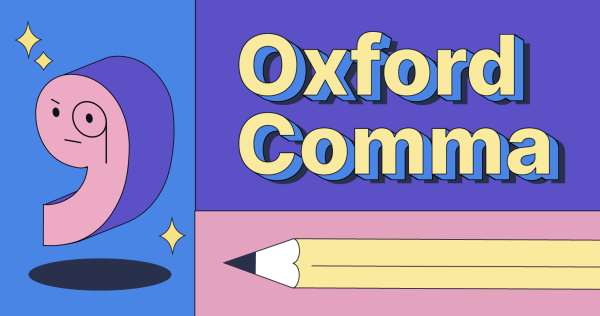Get a handle on social media before it gets a handle on you
Because of its addictive nature, social media influences pretty much everyone everywhere nowadays and, whether you like it or not, it is not going away anytime soon.
Because of the pandemic, people have had to quarantine in their houses with few things to do and have been scrolling through social media this past year more than ever.
That, according to experts, makes it even more important that people understand the perils as well as the benefits of social media and take a proactive approach to make it something positive in their lives.
Christiana Burkhalter, a junior at Kamiak High School, said that she has experienced the darker sides of social media. “Social media has been a place where I have definitely negatively compared myself to other girls around my age.”
And Burkhalter is just one of the millions of teens facing the downsides of social media use.
According to experts in the field, there are several reasons why social media can be toxic.
When someone goes to look at their favorite influencer’s feed and faces a gallery of face-tuned, picture-perfect images that are supposed to reflect how they look all the time, it is very deceiving.
Oftentimes, when someone sees these perfect images, they compare themselves to the influencers and are left feeling less than and unhappy. This is toxic.
Most celebrities are not going to post photos of themselves in imperfect, vulnerable, human moments. Instead, they are going to pick the photos that are best of the best, and even then they will face-tune, edit, and photoshop to make the images even more unrealistic and “perfect” and present those to the world.
These routines create unrealistic standards and leave the rest of us feeling bad about how we look.
Burkhalter says that in her experiences, social media creates an unrealistic beauty standard and she shares that seeing these impossible standards all over everyone’s feeds encourages mental distress.
“I even know a few people who, when they are around me, say they wished they looked like her as they point to an Instagram photo or tik tok video because they have an hourglass figure or a super slim figure,” she said.
Not only does social media depict unrealistic beauty standards, but it also encourages toxic positivity.
Even though people may not be familiar with the term “toxic positivity”, they almost certainly experience it, according to Natalie Hendry from RMIT University’s School of Media and Communication.
“‘When people share content about life’s challenges and the only replies are overly positive and ignore that that person might be feeling upset, tired, worried and so on,” Hendry said.
These overwhelming remarks can leave one feeling invalidated and like they should only be positive.
Toxic positivity does not have to be from a specific post or comment, it can creep up over time as we observe people’s “perfect lives” on their screens.
According to The Australian Broadcasting Corporation, “while someone posting happy images or quotes isn’t necessarily toxic to their own happiness, it might be experienced as toxic by those who consume the content.”
The toxicity comes when people fail to realize real people with real, hidden, struggles are posting these things. People can simulate a picture-perfect life on the screen, but behind the screen is a person with battles of their own. This is comparable to when celebrities advertise themselves and their bodies in a way that develops unrealistic body standards, except it is with their lives.
Looking at someone’s life from an outsider’s perspective when the only thing we know about the person is what they choose to share with the world is not healthy.
The Australian Broadcasting Corporation emphasizes that “while valuing happiness itself is OK — being happy is good — the idea that we need to maintain that level of happiness or are failing if we experience flipside emotions is toxic.”
Although these are the negative effects of social media, there are some positives. Such as the fact that social media can strengthen relationships and encourage people to stay connected.
New friends are just the press of a button away with apps like Snapchat, Instagram, and Facebook. It is easier than ever to reconnect with old friends or meet brand new people and build new kinships.
Meeting new people does not only provide more friends, but an article by Michigan State University explains “increasing the spectrum of possible connections can help individuals and organizations identify specific parties with shared interests or goals, experience solving similar challenges, or even developed tools or methods for completing a mutual task.”
Not only is social media building new connections, but it is also maintaining old ones. Due to the pandemic, people are unable to meet with their friends as much, so social media is a significant way to keep in touch virtually.
An excerpt from an article Verywell Mind published details that “people have used social media to share information and connect with people when stay-at-home orders have kept them from meeting in person.”
With a positive, open mindset, social media is a very efficient and easy way to develop and maintain relationships. Considering all of the people one can meet online and how many people those people can meet, the opportunities are endless.
Social media is also a great place for those who struggle with social skills or have the anxiety to go. Conversating through a screen makes socializing stress-free and swift. The lack of the face-to-face aspect that social media offers when it comes to socializing gives every teen the chance to comfortably converse.
A section from a Psycom report dives into this positive feature of social media. “Teens in marginalized groups—including LGBTQ teens and teens struggling with mental health issues—can find support and friendship through use of social media.”
Adolescents can easily find groups and people who share corresponding struggles with them and can connect and find support amidst one another. Psycom reveals that “when teens connect with small groups of supportive teens via social media, those connections can be the difference between living in isolation and finding support.”
Social media is a very convoluted matter. There is a harsh, toxic side but there is also a supportive, comforting side to it. And though it is very daunting, social media is not going anywhere anytime soon. The key is determining the balance between both so we might as well start striving to locate the happy medium.




